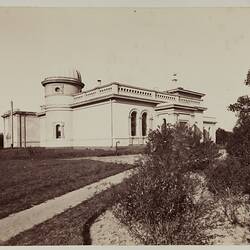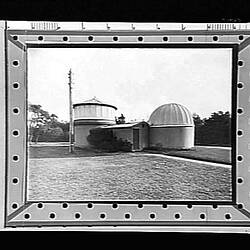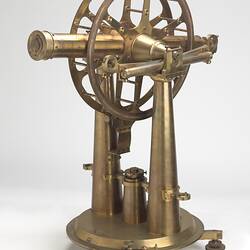Transits of planets across the face of the Sun were highly important astronomical events, because they could provide data that would assist in calculating the distance between the Sun and Earth, and hence the distances of all the planets from the Sun. These matters were of fundamental scientific importance, because they provided data for analysing the subtleties of the solar system and the gravitational interactions of the planets and the Sun; they also had practical consequences for navigation.
However transits could only be observed from a narrow band on the Earth's surface. Transits of Venus were also exceedingly rare, occurring in pairs only every century or more. The primary purpose of Captain James Cook's first voyage to the Pacific in 1768-1771 had been to make observations of the Transit of Venus on behalf of the Royal Society.
Melbourne Observatory took full advantage of the two Transits of Venus that occurred in 1874 and 1882. The Victorian Parliament provided additional funds to purchase an 8 inch equatorial telescope and a photoheliograph (a specially designed telescope to take photos of the Sun). Two field observatories were also established, to reduce the chance that cloud would spoil the observations. Government Astronomer Robert Ellery and his assistants aided American and German expeditions to Tasmania and New Zealand, by making measurements of stars that would help them locate the precise longitude of their temporary observatories.
The Melbourne astronomers made observations of the 1875 transit at the Observatory, Bendigo, Mornington and Glenrowan. In 1882 observations were made by the Melbourne astronomers from Hobart and Sale. Both sets of results were sent to the Greenwich Observatory in Britain to be added to the observations made from other expeditionary parties.
More Information
-
Keywords
-
Authors
-
Article types







